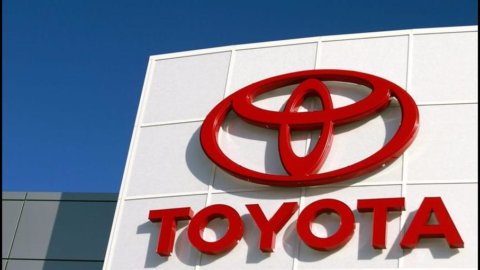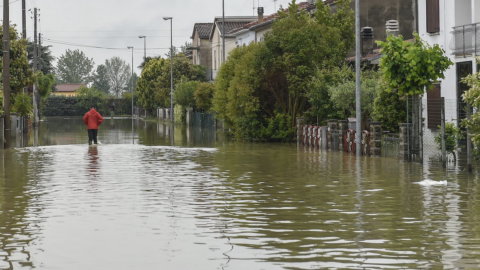For the sixth consecutive year, Toyota is the world's largest multinational in the industrial field with total assets of 269 billion euros, ahead of the British Royal Dutch Shell, the American ExxonMobil, the Russian Gazprom and the German Volkswagen-Porsche . This is what emerges from R&S-Mediobanca's annual survey of industrial multinationals which includes an examination of the 375 major multinationals of industry, telecommunications and utilities. In the world rankings, the first Italian is ENI (13th), followed by Fiat (32nd, but would become 19th with Chrysler) and Finmeccanica. The multinationals continue to increase their turnover and their capital solidity while in the first quarter of 2011 the Europeans do better than the Americans, but the Italians are only 15, three less than the previous year. And they are also among the smallest, least globalized and least productive. The presence of the State in Italian multinationals is strong and also for this reason our largest companies are those that relocate the least. Here are the details of the R&S-Mediobanca investigation.
THE INVESTIGATION
The survey covers the 375 largest multinationals (MEs) located on five continents and operating in industry, telecommunications and utilities. These companies employ approximately 29 million employees with a turnover equal to 24% of European GDP, 17% of North American GDP and 33% of Japanese GDP. Their stock market value represents 42% of the European stock exchanges, 25% of the North American one, 27% of the Japanese one. In Italy we have 15 (700 employees, 19% of GDP and 35% of the Stock Exchange), alongside three with Italian shareholders, but based outside Italy (Ferrero, STMicroelectronics and the Rocca group).
THE 10 “WORLD CHAMPIONS” 2010
At the end of 2010, the largest industrial MEs by total assets was the Japanese Toyota (269 billion euros), in that position since 2005. The top ten positions include two US companies, four European, one Japanese, one Russian (Gazprom), one Chinese (PetroChina) and one Brazilian (Pretrobras). Eight companies are energy. The only two manufacturing champions are automakers: in addition to Toyota, Germany's Volkswagen/Porsche. Thirty years ago (1989) the photo of the top ten immortalized another world: only MEs from mature countries (four Americans, three Japanese, two from the United Kingdom and also one Italian); three only energy and then all manufacturing, including four car manufacturers: GM (now 29th), Toyota, Ford (now 42nd) and Fiat. IBM moved from fifth to 33rd.
THE ITALIANS
Today the first Italian is ENI (13th), followed by Fiat 32nd (but with Chrysler it would rise to 19th place), 104th and Finmeccanica. ENI is the ninth energy company in the world, after Total and before ConocoPhillips; Fiat is the world's ninth largest automaker, after GM and Renault, but ahead of Peugeot and Hyundai. It would be seventh with Chrysler, ahead of GM and Renault and tied with Nissan.
GIANTS IN THE BAG
Stock market valuations do not follow those of the financial statements: Toyota is even 16th and only three companies among the top 10 (ExxonMobil, PetroChina and Chevron) are among the top 10 by value of assets. Apple (221 billion), Nestlé (152 billion) and General Electric (145 billion) are among the top five by stock market value but not among the top 10 by assets (Apple is 40th). The top ranking by market value is dominated by US companies: seven out of ten, along with two Swiss ones. The Italians score penalizing stock market values and move back from the ranking for total assets: 35th ENI, 129th Fiat, 175th Luxottica.
In TLC, the largest company by total assets is the Japanese NTT (157 billion euros), followed by the American AT&T (101 billion) and the British Vodafone (98 billion). In this sector there are four European companies, two Chinese and two American, one Japanese and one Mexican. Telecom Italia is twelfth. Stock market prices reward China Mobile (149
billion euros) and AT&T (129 billion euros), third Vodafone (101 billion). The South African MTN Group in tenth position should be noted. Beyond the top 10 Telecom Italia (it is 19th). As for utilities, Enel is fourth in terms of total assets (129 billion), in line with E.ON (130 billion) and preceded by EdF, first with 224 billion, and GdF Suez (144 billion). For North America, only Hydro Québec is present (48,5 billion euro). For the rest, the sector is dominated by French clubs (three out of ten with the top two in the standings), with two appearances each also for Germany and Spain.
HOW 2010 WENT: EUROPE vs NORTH AMERICA vs EMERGING
1) industrial multinationals reported a strong recovery in revenues: +15,2% worldwide, +13,8% in North America and +15,4% in Europe. The recovery in the Russian-Asian area was more aggressive, equal to 27,6%, and in the rest of the world (Africa, South America and Australia), where it reached 20,5%. Compared to 2008 (pre-crisis) the level of sales in Europe is 5% lower, 7% in North America. In the Russian-Asian area, the strong growth of 2010 canceled the modest decline of 2009 (-4%) and brought sales by 23% above the level of 2008. The profit levels (e.g.: Net profit / turnover) of 2010 are in line with the pre-crisis average.
2) the recovery of sales in 2010 was supported by the energy industry which benefited from the increase in crude oil prices (+29% approximately in dollars), while manufacturing activities recorded more contained recoveries. However, higher growth in energy revenue translated into higher margin growth only in North America; in Europe and in the Russian-Asian area, manufacturing recorded more marked improvements. ROE from manufacturing activities is higher than energy.
3) Overall, the equity structure strengthened, due to the marked growth in equity and the very limited growth in debt (down in Europe). The North American EMs are more capitalized and less indebted, with a debt/equity ratio of 0,4 against 0,6 for the European ones; moreover, they present a conspicuous presence of liquid assets, equal to 12,3% of assets and even 70% of financial debts (9,4% of assets and 38% of financial debts for the European companies). The Asian Russians are very solid in terms of assets. Investments grew more in the USA than in Europe (7,9% vs 3,1%), as did employees (4% vs 0,6%).
THE 2010 OF THE ITALIAN MANUFACTURE
1) The growth in turnover (9,3%) was lower than the European average (11,4%) and that of Germany (17,6%) and France (11,8%);
2) Margins have grown less (Mon: 30,3% vs 47,7% European average) and show lower incidences on turnover (Mon: 5,4% in Italy vs 10,5% European average);
3) Net profitability is about a quarter of the European one if measured with respect to turnover (net profit / turnover: 1,9% in Italy vs 7,8% European average) and less than half
equity (roe: 8% in Italy vs 18,9% European average); these are far from pre-crisis levels (7,5% net profit on turnover in 2007);
4) The financial structure of the Italian EMs remains characterized by a greater recourse to financial debt equal to 1,2 times the equity (0,7 the European average) and by a considerable reserve of available funds (cash and negotiable securities) equal to 25,6, 50,5 billion euros and half of the financial debt declared (17,1 billion); the largest liquidity supplies are held by Exor (1,9 billion), Finmeccanica (1,5 billion), Parmalat (1,4 billion), Danieli (1 billion) and Cofide (XNUMX billion).
THE FIRST MONTHS OF 2011
The first three months of 2011 of the MEs mark an increase in total turnover of 11,7% (not far from the 15% recorded in 2010 on 2009). Europe shows a greater boost: +17,2% against +13,4% in North America. Even the margins with respect to turnover show stability compared to 2010: Mon on turnover at 12% in Europe (11,4% in the full year 2010) and 16% in North America (13% in 2010); net profit on turnover at 8% in Europe (7,4% in 2010) and 10% in the North
America (9,5% in 2010).
The most prominent sectors in terms of sales development are: food (+25,3% on the first quarter of 2010), energy (+24,4%), tires and cables (+19,8%) and metallurgy (+17,5 %). Modest increases in mechanics (+2,3%), down in electronics (-1,4%). The dynamics of margins are contradictory: the mon on turnover shows improvements in six sectors out of twelve, while the net result is in progress (again with respect to turnover) in ten sectors out of twelve. There
financial structure continues to strengthen and compared to the end of 2010, marking the further reduction of the financial debt on equity from 66,3% to 64,4%, entirely attributable to the European MEs which stood at 81,8% (from 85,2%), while North American women are stable at 42,7% (from 43% at the end of 2010).
CRAFTS
The specialization of the MEs affects the results. A first qualification concerns the presence of the energy industry whose performance depends on the price of crude oil. The MEs of Europe and North America are equivalent in this: they make about a quarter of their revenues from oil, the rest comes from manufacturing activities. In emerging areas (Russian-Asian area and Africa plus South America) the incidence of the energy industry is 40/45%. But also inside
of European countries the differences are important: Germany and Switzerland have no energy industry (2% and 7% respectively of turnover), in France it is around 23%, in Italy it reaches 38%; in the UK it exceeds 71%. They then look at manufacturing alone, between Europe and North America the main difference lies in electronics which accounts for 22,7% in North America and 11,6% in Europe and, to compensate, in the greater weight in Europe of mechanics (15,3%
against 9,2%) and "Several" activities (metallurgy, production of building materials, paper, etc.) which account for 21,9% of European turnover and 15,4% of North American turnover. In Japan, electronics and means of transport represent two thirds of the total; in the Russian-Asian area, electronics alone is worth half of the total turnover. In Italy means of transport (53,3%) and mechanics (15%) represent 7/10 of the sales of MEs (Fiat alone is worth 25,8% of the total), while chemistry is totally absent- pharmaceuticals and electronics; in Germany the lower weight of means of transport (36,6%) leaves room for mechanics (22,3%) and chemical-pharmaceuticals (18,2%). The latter represents the core activity in the United Kingdom (37,2%) and in Switzerland (38,8%) where, together with food (32,2%), it sells out 7/10 of the total. Finally, in France means of transport (23%) are equivalent to chemical-pharmaceuticals (21,7%), to which must be added 14,2% of mechanics.
INTERNATIONAL OUTLOOK AND WORKFORCE
MEs are by definition delocalized, but the intensity with which this happens varies. You can examine several parameters to get a measure. The first is given by the sales made abroad (exports plus foreign sales): Italy brings up the rear (68,7%), behind Germany (76,1%), France (78,3% ) and UK (85,6%); 10 pp below the European average. If we then exclude the proximity market represented by the other European nations, the shares are greatly reduced, but the Italian position does not vary: Italy 36%, against 38% in France, 42% in Germany and 64,4% of the UK. Looking at the non-European markets, the European MEs, with 47,5%, export less than the North Americans (52,3%) and the Japanese (53,3%). Even considering the employees based outside the home country, Italy shows a lower degree of international projection: 1,2 employees abroad, every one at home; less than Germany (1,4). France (1,6) and well below the European average (2), held high by the "small" countries that have almost everything across the border: Switzerland (11,3 foreign employees every one at home), the Benelux (5,8 ), Sweden (5) and Finland (3,2). But our home champions are not lacking: Pirelli & C. is 20th (5,6 each in their homeland) and slightly precedes Luxottica (5,4) and Parmalat (5,2), in a ranking led by world-class from the Swiss MEs: Clariant (32), Liebherr (31) and Nestlé (30). In the last decade, the number of employees outside the home country grew by 11,6% in Europe and by 12,1% in North America; on the other hand, there was a sharp drop in the workforce in the country of origin: -13% in North America, -16,7% in Europe. In some cases, the hemorrhage of workers in the country of origin has not been compensated by growth abroad: France (-10,7% overall variation, +1,8% abroad, -25,1% at home ) and UK (-12,3% overall change, +6% abroad, -2,2% at home). In Italy, the domestic reduction (-32,3%) was more than offset by the reduction abroad (+2,8%). In this trend, privately controlled companies are more aggressive than publicly controlled ones: less development
employment over the decade (5,6% vs 13,2%), greater cuts in domestic employment (-12,3% vs -5,9%), lower job creation abroad (16,9% vs 48,8, XNUMX%). This is partly due to the monopolistic nature in which much state-owned industry operates.
RELOCATION: NOT ONLY PLANTS, ALSO BRAINS
MEs now have one in five subsidiaries in emerging countries. This figure is substantially uniform between North America (17,8%), Europe (22,9%) and Japan (17,9%). Also on the basis of this parameter, the Italian presence across the border is a little less strong: 20,1% of affiliates are in emerging countries, against 22,6% in France, 23,2% in Germany, 29,4% of the UK. Assuming the total number of affiliates in emerging countries to be 100, this is where those of the European MEs stand: 22% in China, 6% in India, 34% in other Far East countries, 8% each in Brazil and Mexico, 7% in Russia and 15% in Africa. The BRIC alone makes 43%. But it is the intensity of the presence in the various emerging countries that greatly differentiates the countries: Italy is relatively not present in China, with 13% of its subsidiaries, against 26% in France and 25% in Germany, but it is in line in the other Asian countries where it placed 32% of its subsidiaries, a little below Germany (38%), but on the levels of France (32%); the Italian presence in Brazil is important (11%, against the 8% European average), above all for the Fiat establishments, and in Africa where with 26% of the affiliates (ENI and Italcementi) Italy is well above the European average (15%) and behind only the UK (44%). It is less known that the relocation has also affected the most valuable activities, those of research centres
whose location abroad makes it possible to retain local talent and maintain proximity to production sites (cross-fertilisation). In line with what emerged from the subsidiaries, the European MEs locate 22% of their research centers in emerging countries, the North American ones 21,5%, the Japanese ones 16%. European MEs retain 25% of research centers in their home country against 41% of North Americans, a difference that can be explained by the choice of
locate a part of those centers in other European countries. On the other hand, the Japanese MEs keep most of the research centers on their soil (53%). The Italian MEs are also a little more provincial in this (but maybe that's a good thing?): 37% of the centers are in their homeland (compared to 31% in France and just 16,5% in Germany), surpassed only by the British who they keep 43% of research centers at home.
IN WHOSE HANDS ARE THE MULTINATIONALS?
68% of multinationals are owned by public companies, effectively controlled by managers. The state controls 19% and families the remaining 13%. In Europe, family control (26%) prevails over state control (12%), leaving about 60% to widespread shareholders. In Italy, however, the State takes 65% of the pie, leaving 33% to families. Worldwide, the state portfolio is made up of 42% of energy companies (the state controls about 50% of that sector), 27% of utilities (where the state controls 64% of the sector) and About 18% from TLC (the state controls 43%). In 2010, this portfolio earned governments $10,4 billion. euros: the most voracious is the Brazilian one (2,1 billion euros), followed by the Scandinavian ones (1,7 billion), the Indian one (1,2 billion) and the Italian one which collected 1,2
billion (as much as the Chinese one).
THE EMERGING COUNTRIES
In the last decade, the sales of MEs have shown a dichotomous trend. Sales to emerging countries showed strong growth: +55,6% those of the European MEs, +19% those of the American MEs, even doubled those of Italy. Conversely, sales to mature economies decreased: -13,6% for Italian multinationals, -12,2% for European ones, -5,1% for North American ones. But the EMs of emerging countries have one
ever greater ability to sell in turn on foreign markets: those of Taiwan mark very considerable percentages of sales abroad (87%), as well as the Russians (71%), driven by energy products, and the South Koreans (70% ). The international projection of Indians (53,4%) and Chinese women (35%) is lower, as they have large domestic markets to serve. In recent years (since 2005), however, overseas sales have greatly increased: Chinese MEs by 23% while Indian ones have even increased by +120% (in 2005 the share of sales outside the country was just 24%). This is the effect of the substantial acquisition campaign by the Indian MEs which took over the English steel group Corus (takover of Tata Steel in 2007), the Canadian metallurgical company Novelis (takover of Hindalco in 2007) up to Jaguar and Land Rover in
2008 by Tata Motors.
PRODUCTIVITY: COMPETING ON COSTS OR REVENUES?
It is known that the Italian MEs tend to favor production structures in which a low per capita labor cost prevails and, at the same time, a relatively modest added value. It is also the result of our specialization, marked by the absence of a large pharmaceutical industry (the one with the greatest added value) and by a limited presence in high tech sectors (approximately 10% of our turnover comes from those sectors against the average 24% European). The data
relating to the last five years confirm this profile: the net added value per employee (approximate measure of productivity) of the Italian manufacturing MEs (excluding energy) is equal to 57 thousand euros, below the 73 thousand euros in Germany (-22%) and the 66 French (-14%) and the same European average of 74 euros (-23%) which is supported by the record values of the British (110 euros) and Swiss (96 euros) multinationals. The cost of labor per employee in the Italian manufacturing MEs is below that of the major European countries: our 42 euro per capita compares with the 47 French (-11%), the 56 Germans (-25%) and the 49 average Europeans (-14%). The result is an indicator of competitiveness (given by the ratio between labor costs and net added value) which does not seem to give the Italian MEs a decisive advantage (74% against 72% in France and 78% in Germany), exposing them to competition from the MEs of emerging countries that can sustain personnel costs up to 60% lower: in 2009 the cost of personnel per capita in the Russian Asian MEs was 18 euros against 43 Italians, against a net added value of 40 euros, not enormously far off from the 51 Italians (20% difference).
R&D-Mediobanca





